Winding Design and Analysis for a Disc-Type Permanent-Magnet Synchronous Motor with a PCB Stator
Abstract
:1. Introduction
2. Disc-Type Permanent-Magnet Synchronous Motor with PCB Stator
2.1. Structural Characteristics
2.2. Motor Parameters
2.3. Finite-Element Modeling of PCB Stator Disc-Type Motor
- (1)
- The permeability of the coil is similar to that of air, and it is regarded as part of the air gap.
- (2)
- The motor field is entirely inside the air domain, and the magnetic field in the outside air domain is zero.
3. Analytical Design
3.1. Analysis of the Winding Coefficient
3.2. Power Analysis
3.3. Analysis of Copper Loss
3.4. Eddy Loss
3.5. Efficiency
4. Simulation and Analysis of the Results
4.1. Simulation Analysis of No-Load Characteristics
4.2. Simulation Analysis of Load Characteristics
5. Experimental Results
6. Conclusions
- (1)
- Simulation values were in good agreement with the test data, which showed that the three-dimensional finite-element calculation model established in this paper is reasonable.
- (2)
- For the same stator diameter, the improved winding increased the space utilization of the stator, and the space utilization of the stator reached 68.89%, which is 22% higher than that of the distributed winding. It is more compact in structure and particularly suitable for the requirements of limited motor-size situations.
- (3)
- By contrast, the amplitude of the no-load fundamental line back EMF of the improved winding increased by 36%, and output power increased by 40%. Its effective conductor size was longer. This does not only improve the output power and torque of the motor, but also its efficiency. It even reduces the loss by more than 1.2 times of the rated current.
Author Contributions
Funding
Conflicts of Interest
References
- Tang, R.Y. Modern Permanent Magnet Machines Theory and Machines; China Machine Press: Beijing, China, 1997; pp. 310–311. [Google Scholar]
- Liu, Y. Analysis and Calculation of Disc Coreless PMSM Based on HALBACH Array; Tianjin University: Tianjin, China, 2005. [Google Scholar]
- Shao, L.; Fan, Y. Synchronous motor modeling and simulation of permanent magnet disk. Electr. Mach. Control 2006, 10, 61–69. [Google Scholar]
- Bianchi, N.; Bolognani, S. Design considerations for fractional-slot winding configurations of synchronous machines. IEEE Trans. Ind. Appl. 2006, 42, 997–1006. [Google Scholar] [CrossRef]
- Huang, Y.K.; Zhou, T.; Dong, J.N. An overview on developments and researches of axial flux permanent magnet machines. PCSEE 2015, 35, 192–205. [Google Scholar]
- Liu, B.; Liu, H. Analysis and testing and improved design for enhancing the electromagnetic torque ofdisc-type micromotor. PCSEE 2015, 35, 6519–6526. [Google Scholar]
- Dehez, B.; Markovic, M.; Perriard, Y. Analysis and comparison of classical and flex-PCB slotless wind-ings in BLDC motors. In Proceedings of the International IEEE Conference on Electrical Machines and Systems, Sapporo, Japan, 21–24 October 2012. [Google Scholar]
- Tsai, M.C.; Hsu, L.Y. Design of a miniature axial-flux spindle motor with rhomboidal PCB winding. IEEE Trans. Magn. 2006, 42, 3488–3490. [Google Scholar] [CrossRef]
- Wu, J.F. Design of a miniature axial flux flywheel motor with PCB winding for nanosatellites. In Proceedings of the International Conference on Optoelectronics and Microelectronics, Changchun, China, 23–25 August 2012. [Google Scholar]
- Moury, S.; Iqbal, M.T. A permanent magnet generator with PCB stator for low speed marine current applications. In Proceedings of the Developments in Renewable Energy Technology, Changchun, China, 23–25 August 2010. [Google Scholar]
- Wang, H.; Wu, J.F.; Li, Y. PCB stator winding in axial flux permanent magnet motor for reaction flywheel system. Opt. Precis. Eng. 2015, 23, 1004–1010. [Google Scholar] [CrossRef]
- Wang, X.Y.; Tian, Z. Shape design of windings of disc-type electric machine with PCB stator. Small Spec. Electr. Mach. 2016, 44, 29–33. [Google Scholar]
- Wang, X.; Li, C.; Lou, F. Geometry optimize of printed circuit board stator winding in coreless axial field permanent magnet motor. In Proceedings of the Vehicle Power and Propulsion Conference, Hangzhou, China, 17–20 October 2016; pp. 1–6. [Google Scholar]
- Wang, X.; Li, C.; Lou, F. Optimization design of PCB winding for axial flux permanent magnet synchronous motor. PCSEE 2017, 37, 6092–6100. [Google Scholar]
- Neethu, S.; Nikam, S.P. High speed coreless axial flux permanent magnet motor with printed circuit board winding. In Proceedings of the Industry Applications Society Meeting, Cincinnati, OH, USA, 1–5 October 2017. [Google Scholar]
- Marignetti, F.; Volpe, G.; Cecati, C. Electromagnetic design and modeling of a two phase axial flux printed circuit board motor. IEEE Trans. Ind. Electron. 2018, 99, 299–305. [Google Scholar] [CrossRef]
- Gu, C.L.; Chen, Q.F.; Xiong, Y.Q. Electric Machinery, 3rd ed.; Hua Zhong University of Science and Technology Press: Wuhan, China, 2010. [Google Scholar]
- Li, Z. Design of Permanent Magnet Motor; Xidian University Press: Xi’an, China, 2016. [Google Scholar]
- Wang, X.L. A winding eddy current loss suppression method for power-type axial flux permanent magnet machine with coreless-stator. Torp Technol. 2012, 20, 295–300. [Google Scholar]
- Wang, X.W.; Yang, G.J.; Wang, Y.T. Study of PCB winding loss in reaction flywheel motor with axial flux. Small Spec. Electr. Mach. 2016, 44, 5–9. [Google Scholar]
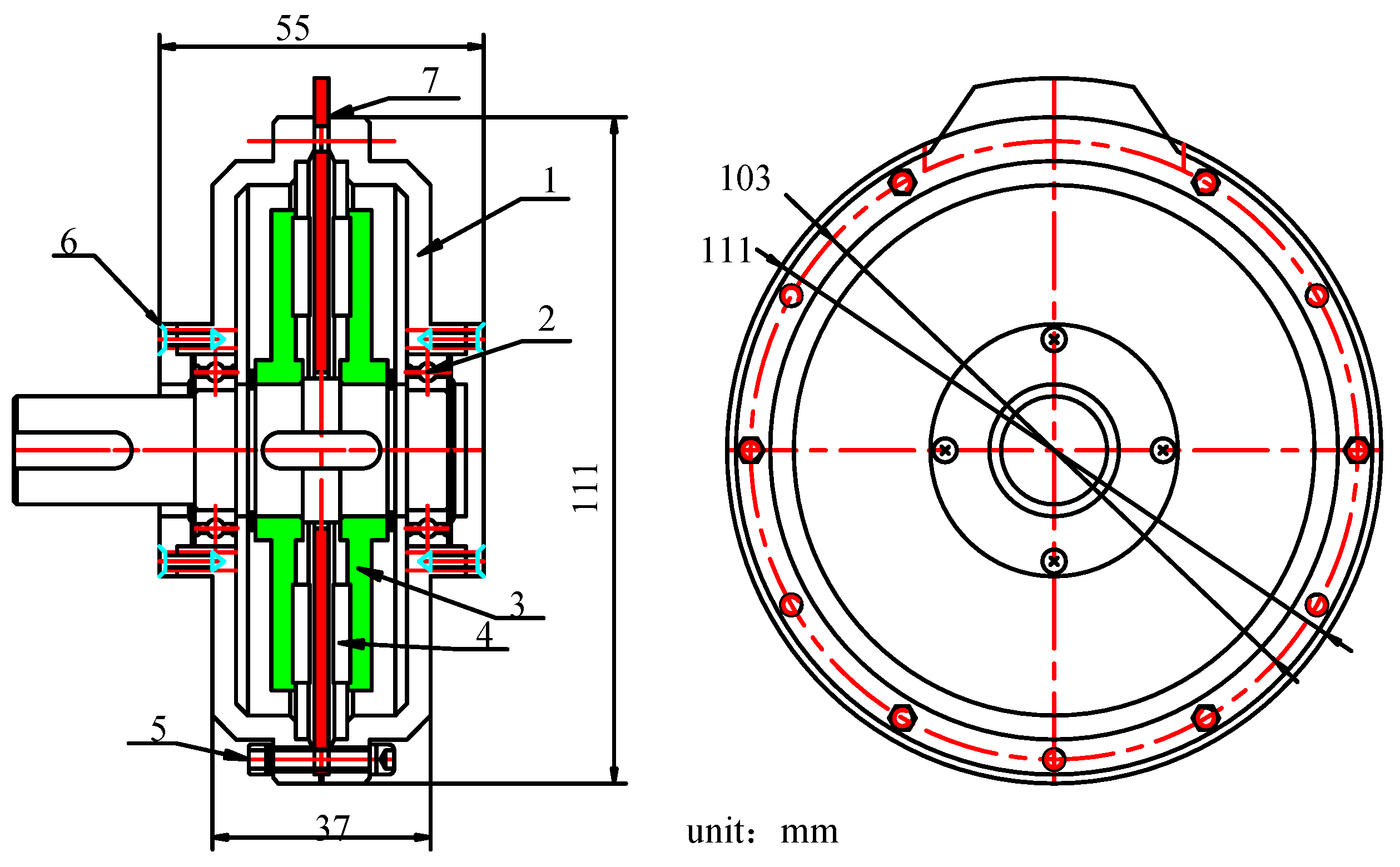





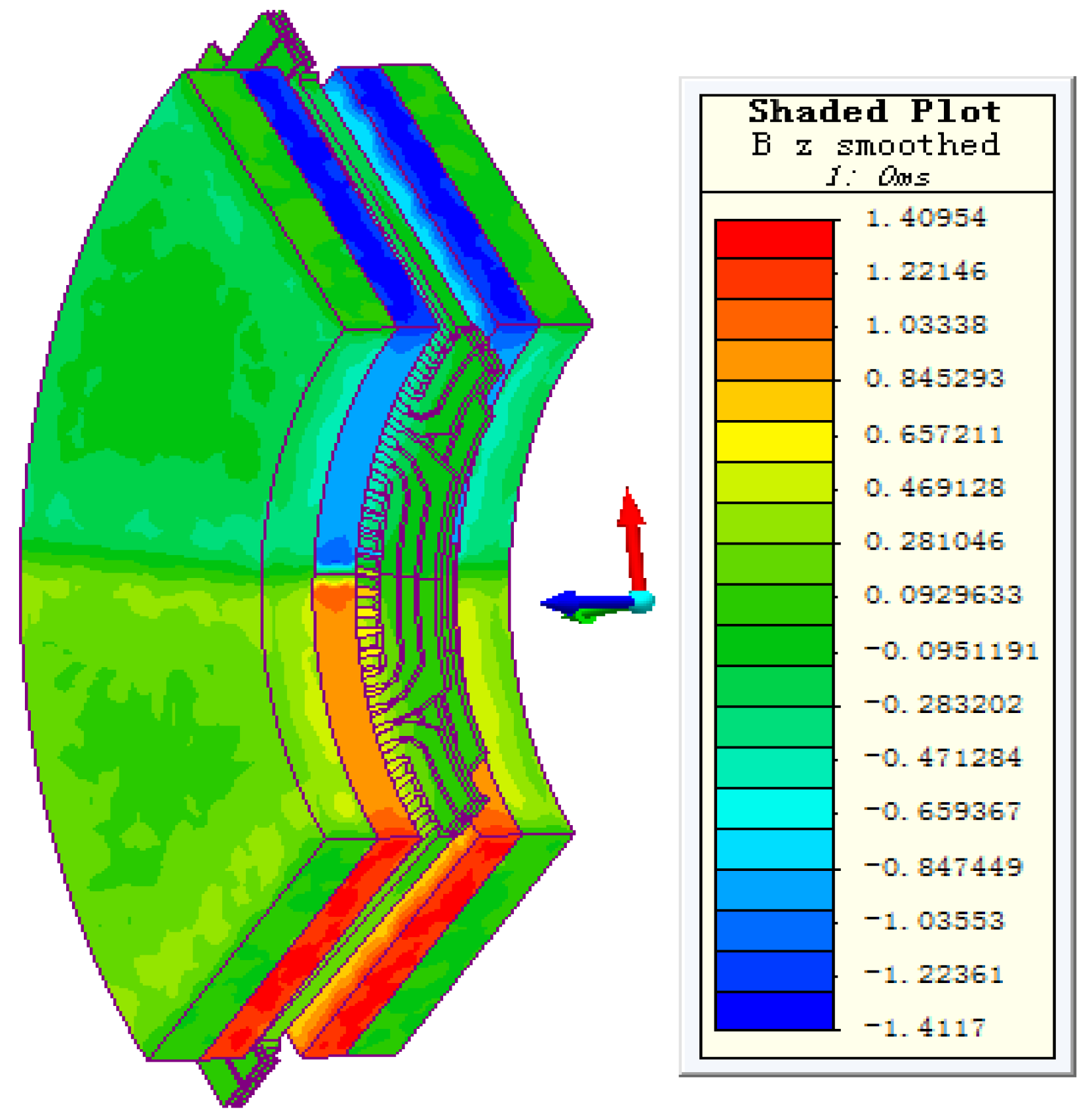
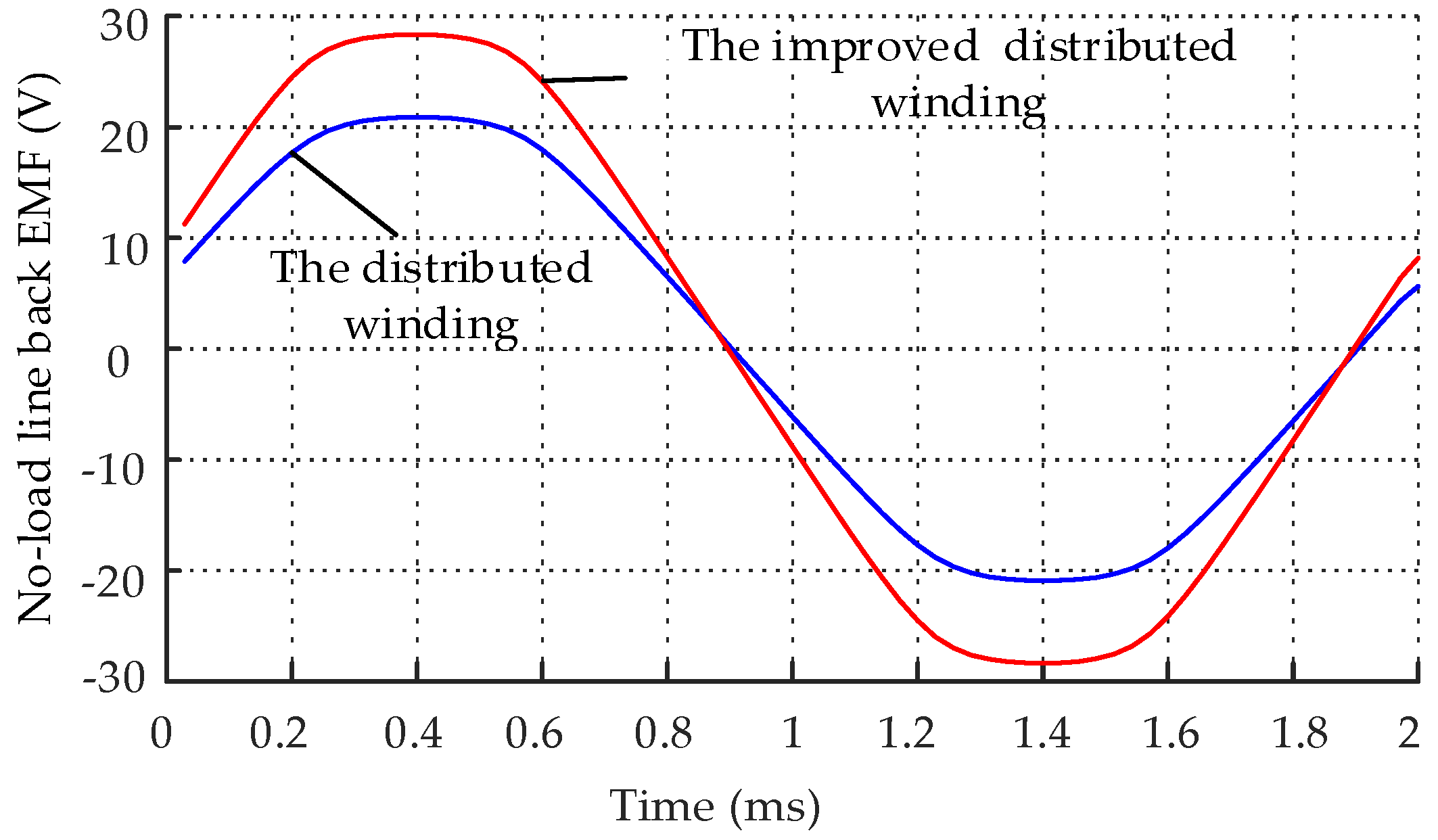
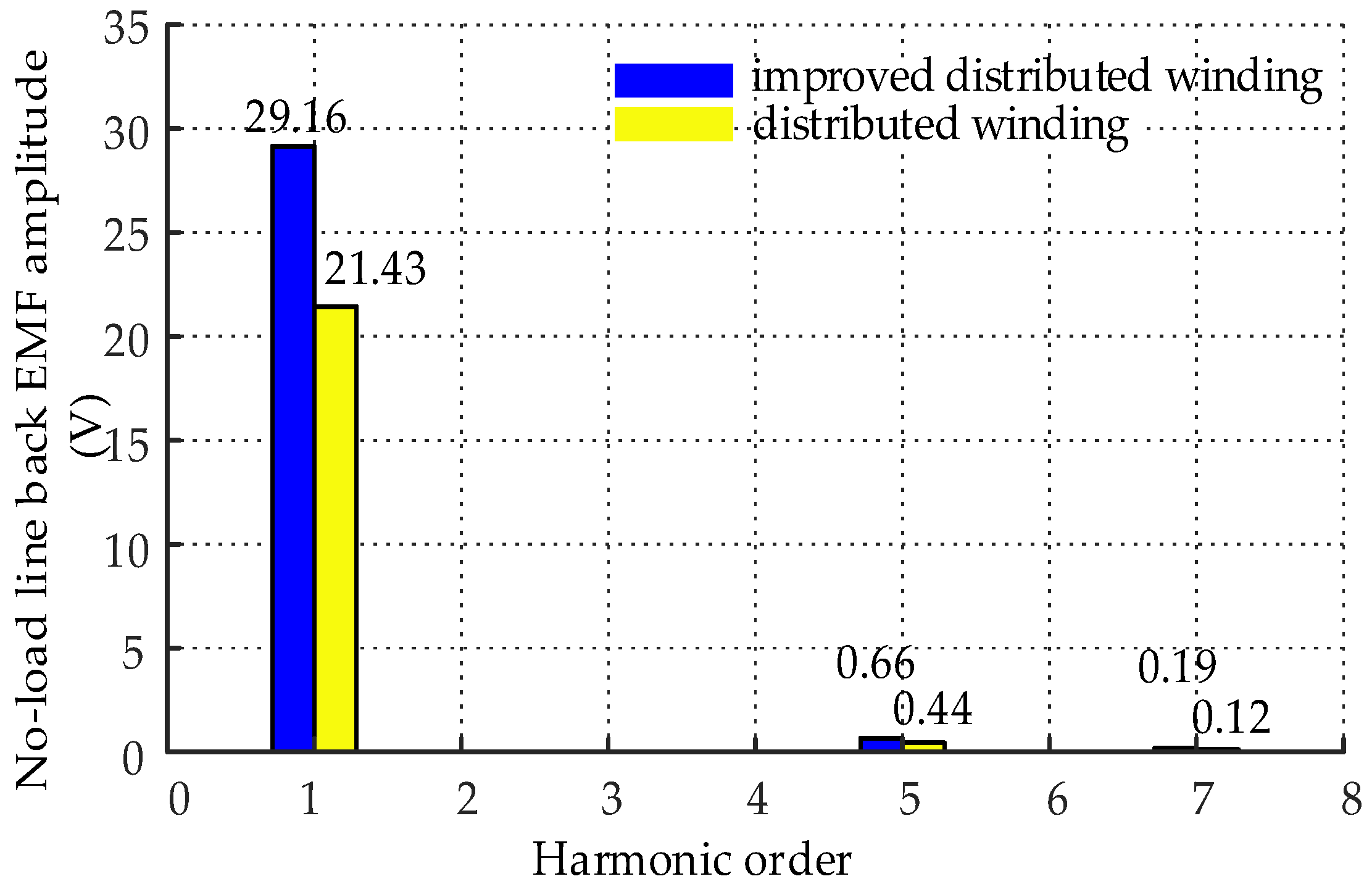
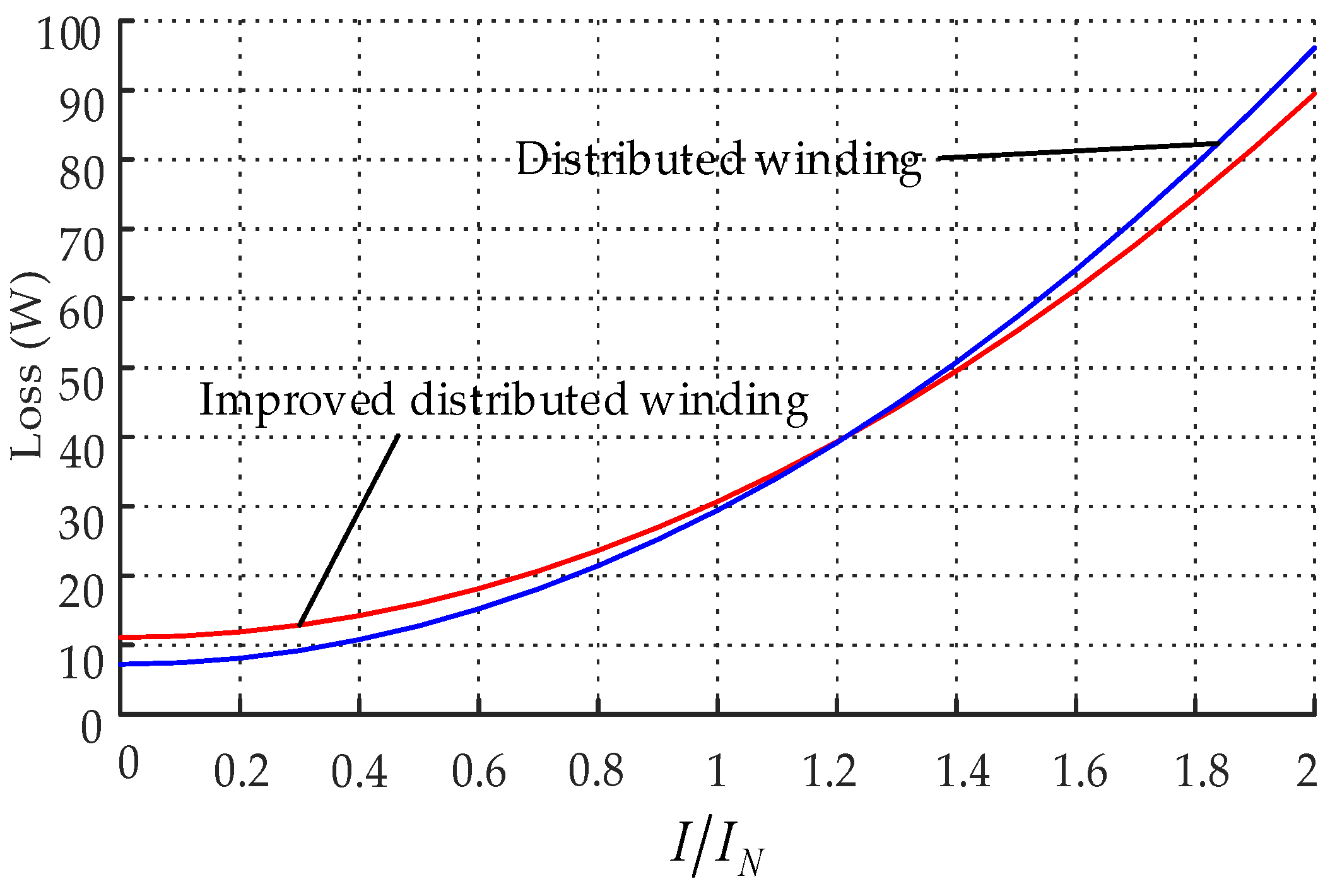

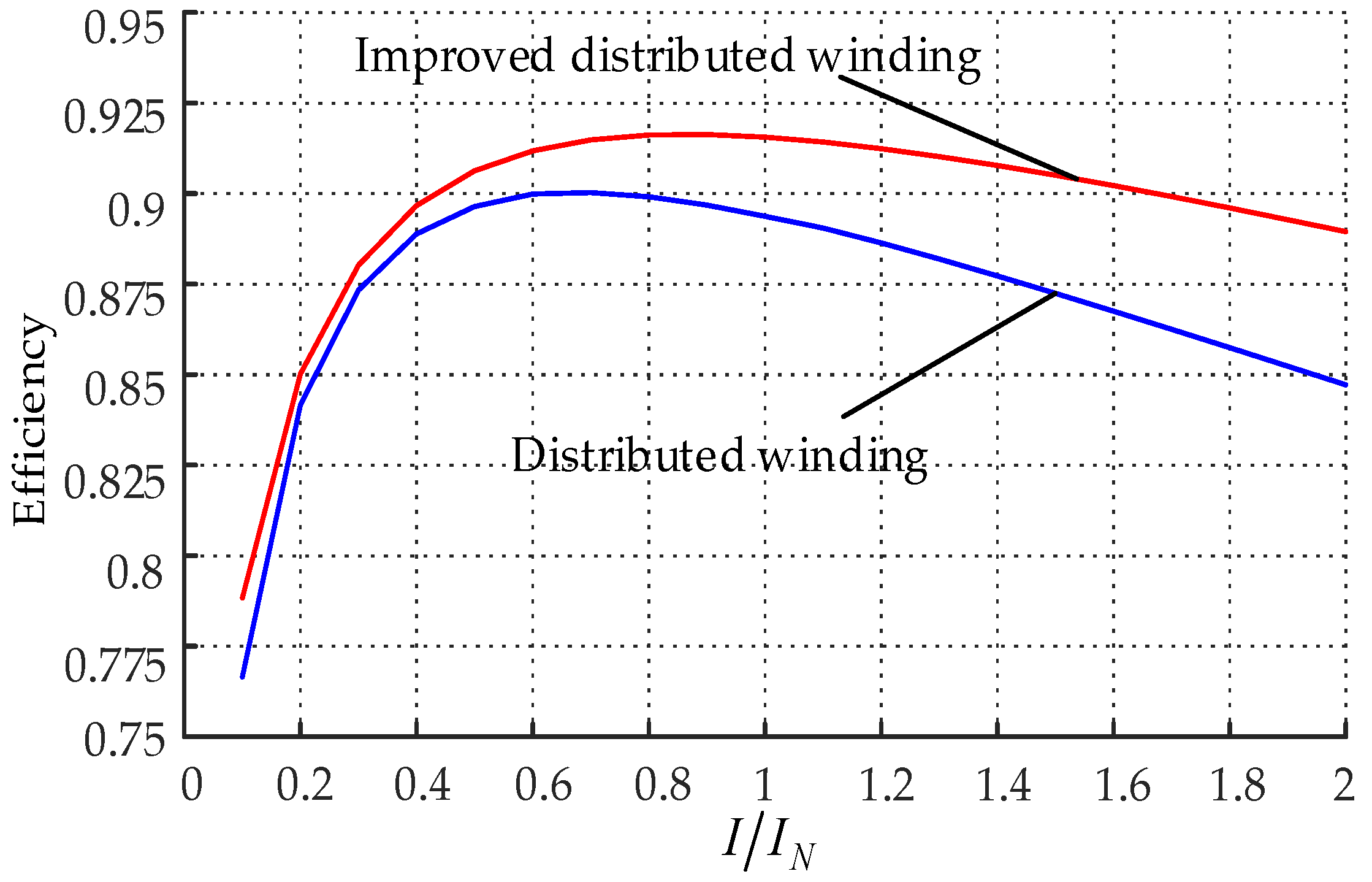
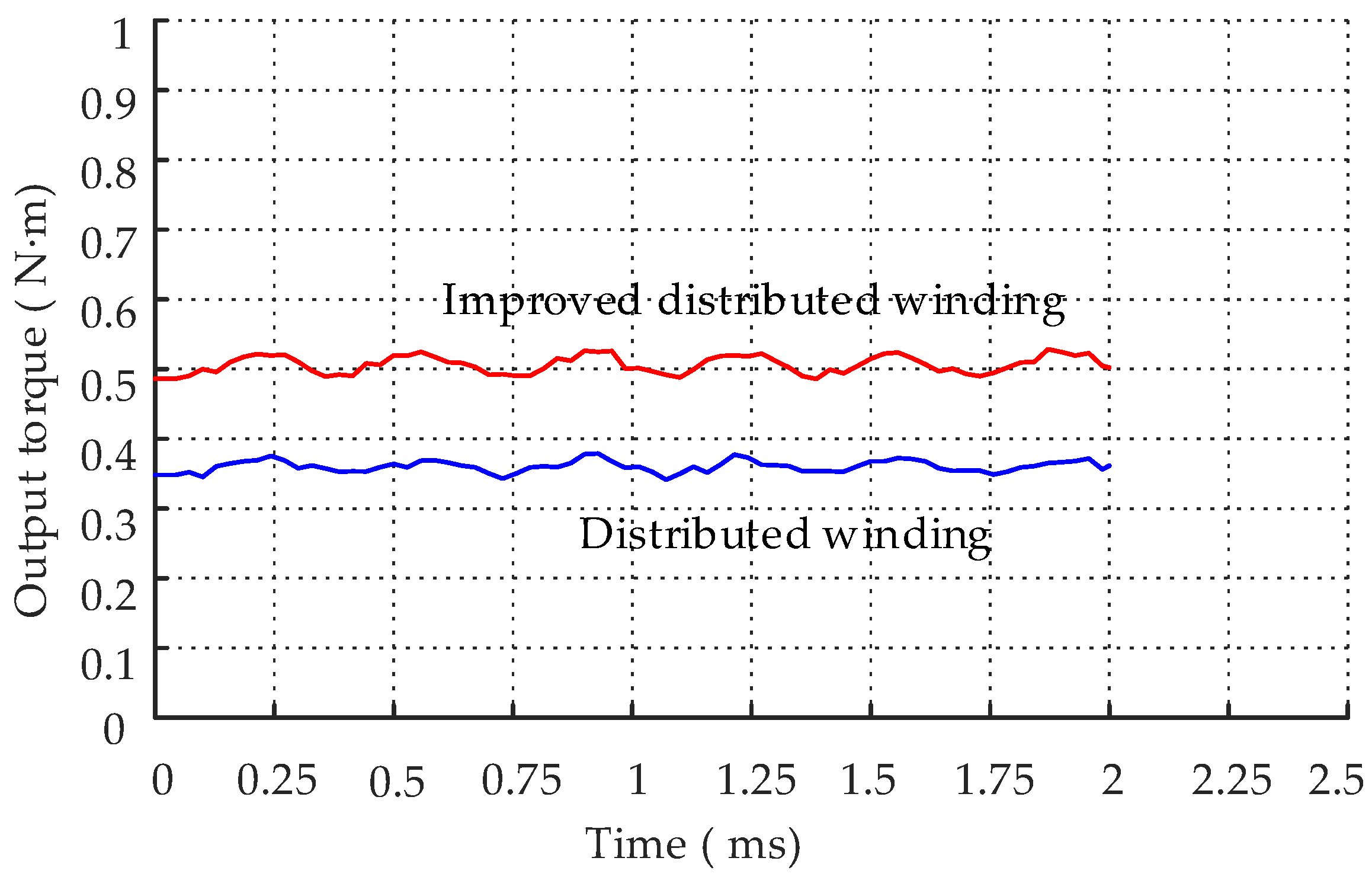
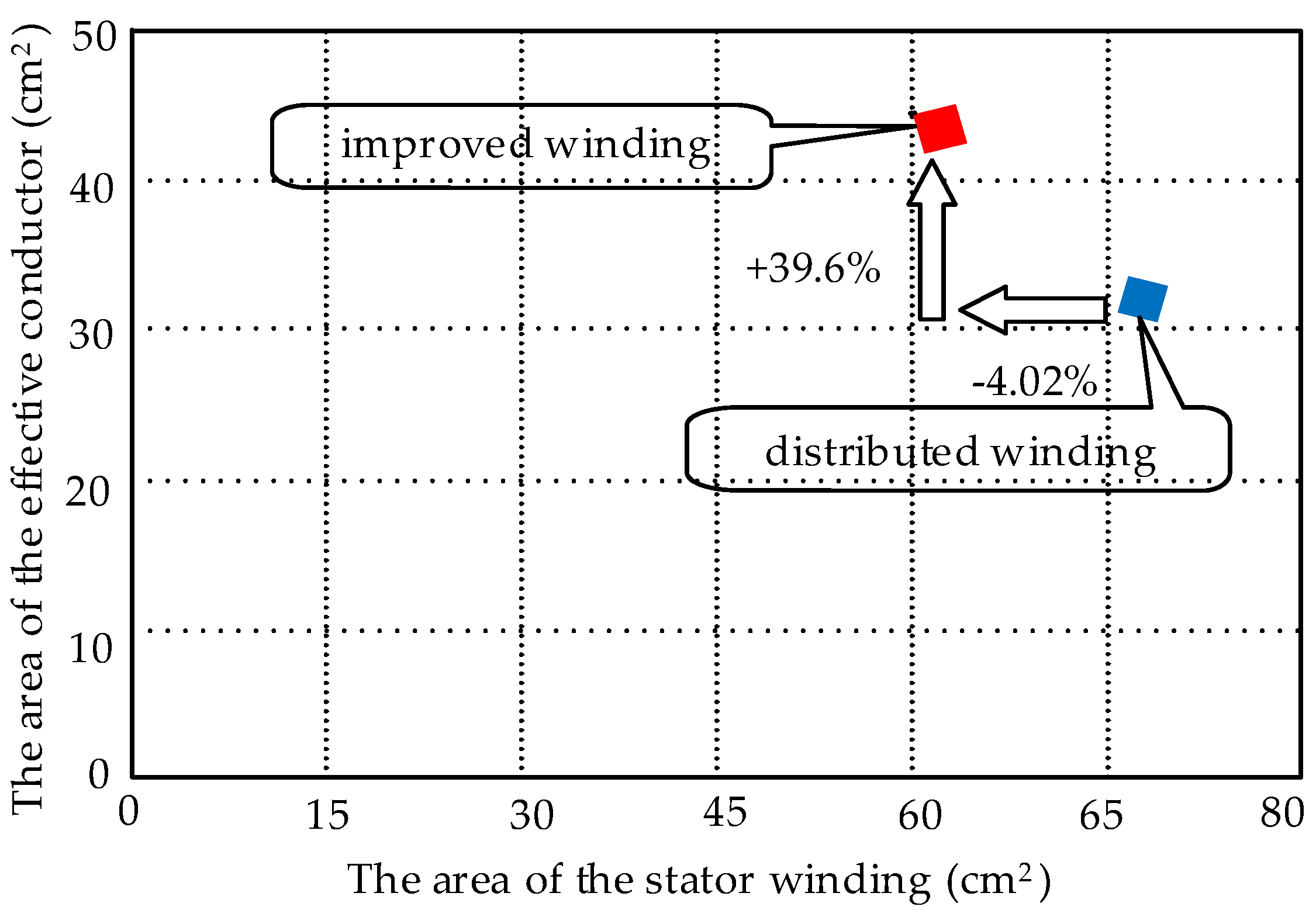


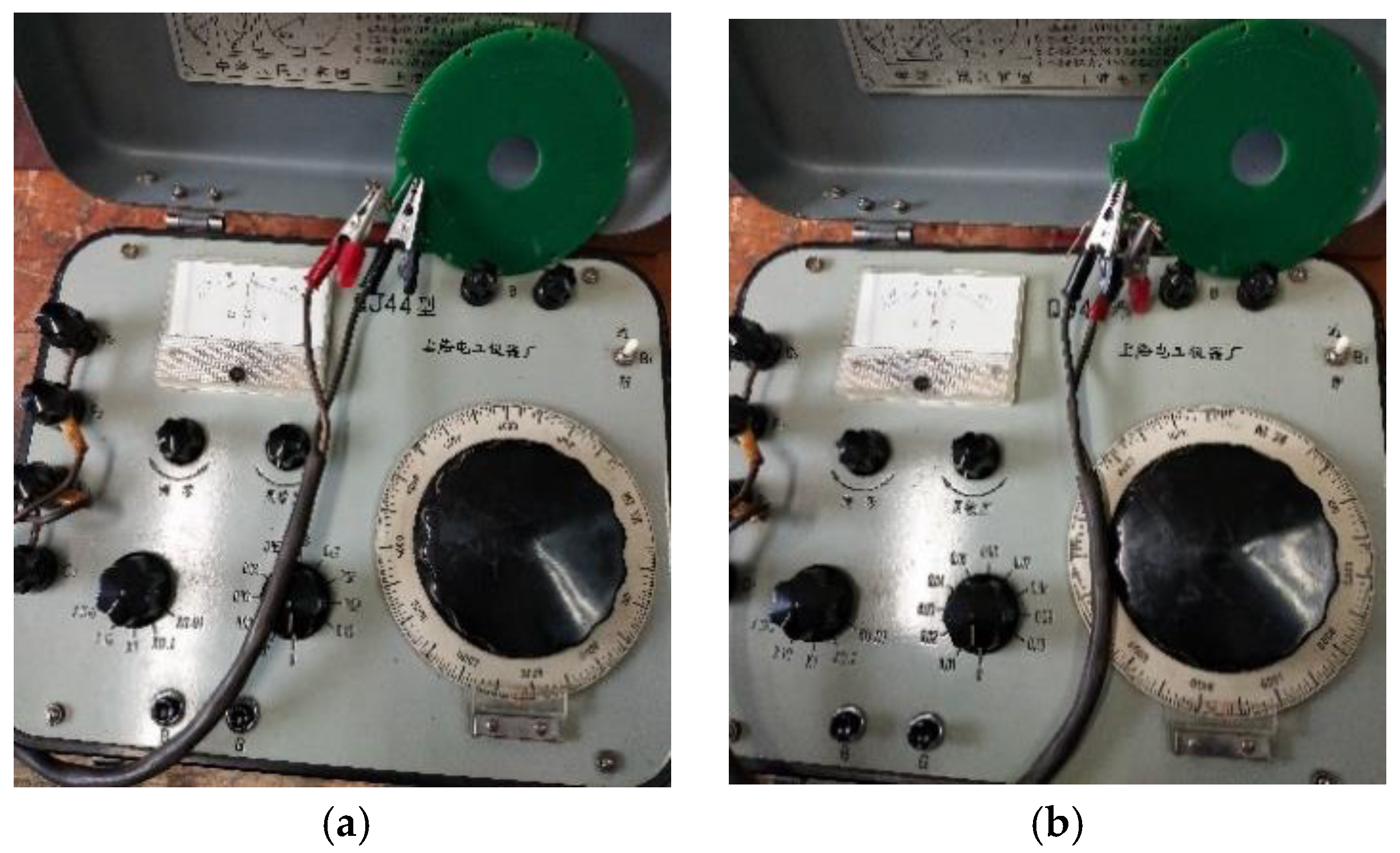
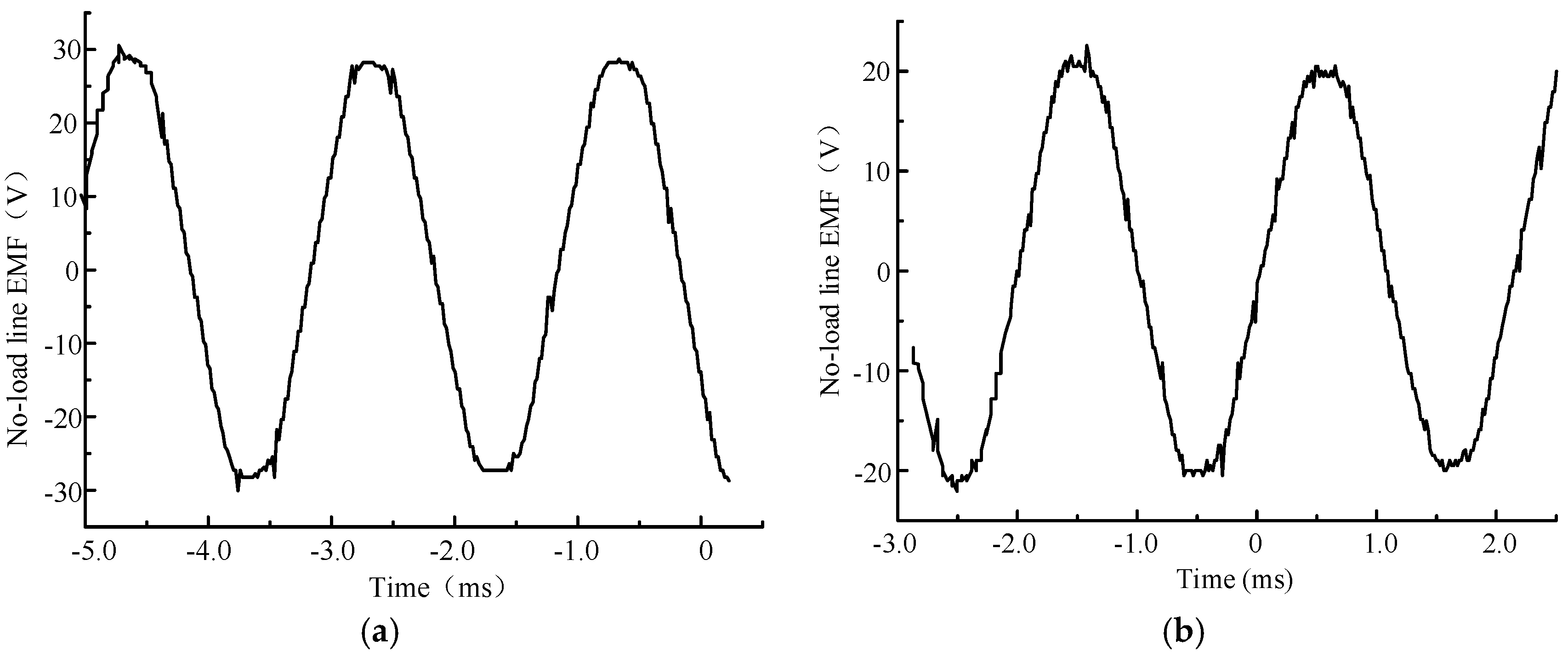
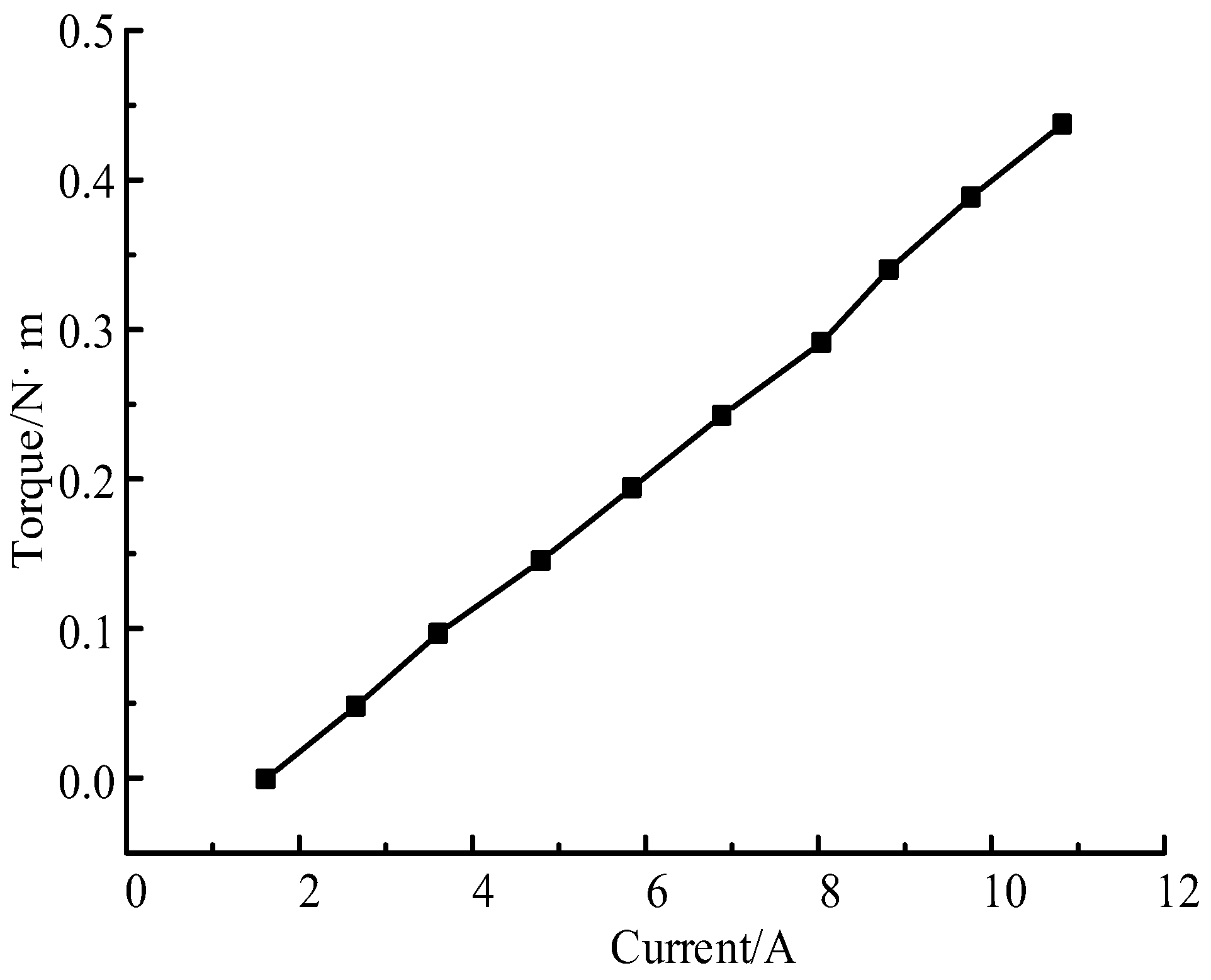
| Parameters | R4 | R1 | R3 | R2 |
|---|---|---|---|---|
| Distributed winding | 48.1 mm | 13.8 mm | 38.7 mm | 22.4 mm |
| Improved winding | 48.1 mm | 17.2 mm | 43.5 mm | 22.4 mm |
| Parameters | Designed Value |
|---|---|
| Rotation | 7500 RPM |
| Current | 10.4 A |
| Torque | 0.35 N·m |
| Power | 280 W |
| Number of winding turns | 20 |
| Number of poles | 8 |
| Thickness of conductor | 1.26 mm |
| Width of conductor | 0.64 mm |
| Air gap length | 4 mm |
| Magnet inner diameter | 44.8 mm |
| Magnet out diameter | 77.4 mm |
| Magnet thickness | 2.9 mm |
© 2018 by the authors. Licensee MDPI, Basel, Switzerland. This article is an open access article distributed under the terms and conditions of the Creative Commons Attribution (CC BY) license (http://creativecommons.org/licenses/by/4.0/).
Share and Cite
Wang, X.; Lu, H.; Li, X. Winding Design and Analysis for a Disc-Type Permanent-Magnet Synchronous Motor with a PCB Stator. Energies 2018, 11, 3383. https://doi.org/10.3390/en11123383
Wang X, Lu H, Li X. Winding Design and Analysis for a Disc-Type Permanent-Magnet Synchronous Motor with a PCB Stator. Energies. 2018; 11(12):3383. https://doi.org/10.3390/en11123383
Chicago/Turabian StyleWang, Xiaoyuan, Huaidong Lu, and Xiang Li. 2018. "Winding Design and Analysis for a Disc-Type Permanent-Magnet Synchronous Motor with a PCB Stator" Energies 11, no. 12: 3383. https://doi.org/10.3390/en11123383




